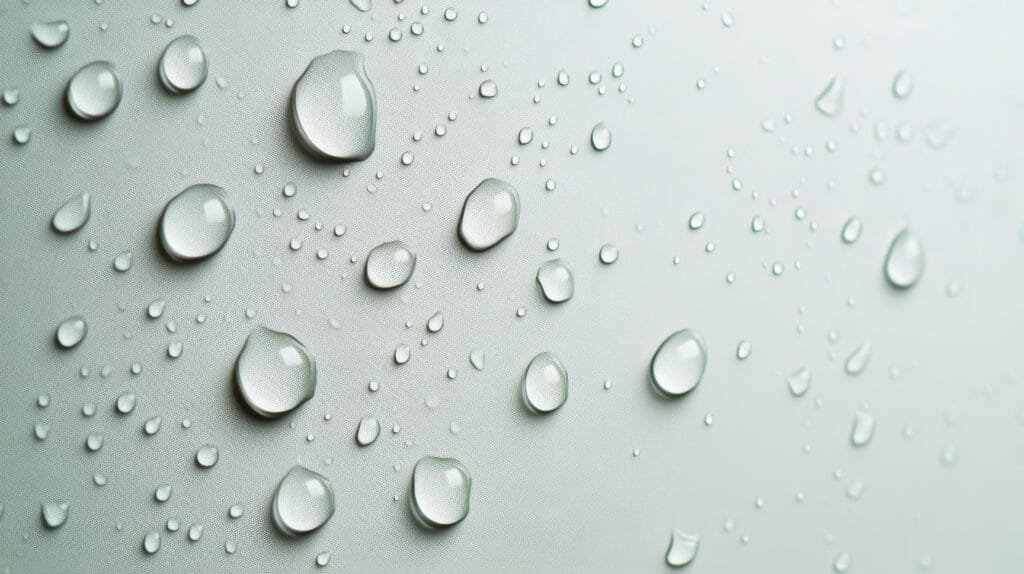Introduction to Waterproof Exterior Paint
Waterproof exterior paint serves as a crucial protective layer for homes, particularly those exposed to diverse and often harsh weather conditions. Unlike traditional exterior paint, which primarily focuses on aesthetics, waterproof paint provides essential barriers against rain, moisture, and humidity. This enhanced moisture resistance significantly reduces the risk of damage to the underlying surfaces, making it a vital choice for homeowners seeking long-lasting protection.
The primary purpose of waterproof exterior paint is to safeguard various surfaces—such as wood, masonry, and concrete—from the detrimental effects of weather. As properties age, external factors like driving rain, snow, and humidity can lead to severe deterioration, including rot, mold, and peeling paint. By incorporating high-quality waterproof options, such as mithila home paints, homeowners can prolong the integrity of their property while enhancing its visual appeal.
One of the foremost advantages of waterproof paints is their remarkable durability. These paints tend to have a longer lifespan compared to standard options, resulting in reduced maintenance costs and less frequent repaints. Furthermore, many waterproof paints are engineered with mold and mildew resistance, helping maintain a cleaner and healthier environment. This is particularly important in areas with high humidity or frequent rainfall, where the risk of fungal growth is elevated.
Additionally, waterproof exterior paint offers a significant aesthetic enhancement, elevating the appearance of a home while ensuring it looks pristine for years. This combination of durability and visual appeal makes waterproof coatings a wise investment. In an era where home maintenance is paramount, utilizing advanced products like mithila home paints can ensure that your property remains not only protected but also attractive amidst changing weather conditions.
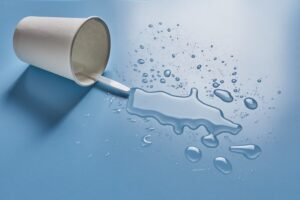
Understanding Types of Waterproof Exterior Paint
Waterproof exterior paint is essential for safeguarding homes against moisture-related damage while enhancing aesthetic appeal. The market offers a variety of formulations, primarily categorized based on their chemical composition and properties. The three prevalent types of waterproof exterior paints are acrylic, epoxy, and latex, each with unique advantages and ideal applications.
Acrylic paints are known for their versatility and excellent adhesion properties. They are water-resistant and provide a breathable finish that allows moisture within the substrate to evaporate while preventing water intrusion from the outside. This makes them an ideal choice for various surfaces, including wood, stucco, and masonry. Acrylic paints maintain their color and gloss over time and are less prone to fading, making them suitable for regions exposed to significant sunlight.
Epoxy paints, on the other hand, offer superior durability and are widely favored in high-traffic areas or regions prone to harsh weather conditions. They form a hard, impermeable coating that is exceptionally resistant to water, chemicals, and abrasion. However, epoxy paints tend to be less breathable than acrylics, which can trap moisture if the underlying surface is not adequately prepared. Thus, they are best suited for surfaces where moisture is less likely to accumulate.
Latex paints are water-based options that are easier to apply and clean, making them a popular choice among homeowners. While they are generally water-resistant, some high-quality latex paints can attain waterproof properties. These paints allow for easy touch-ups and have low volatile organic compound (VOC) levels, contributing to better indoor air quality during and after application. Latex products work well in moderate climates where temperature fluctuations are less drastic.
Understanding the distinctions between these types of waterproof exterior paints can help homeowners select the right product for their specific needs—be it for aesthetic enhancement, durability, or overall protection of their mithila home paints.
Choosing the Right Waterproof Exterior Paint for Your Project
Selecting the appropriate waterproof exterior paint for your home is critical not only for aesthetic appeal but also for long-lasting protection against environmental factors. One of the primary considerations is the climate of your area. Different weather conditions, such as high humidity, heavy rainfall, or intense sunlight, can significantly impact paint durability. For instance, in regions that experience heavy rain, investing in high-quality mithila home paints that feature superior water resistance can be beneficial. Conversely, homes in sunny locations might require UV-resistant formulas to prevent fading.
Another crucial factor to consider is the surface material of your home’s exterior. Wood, masonry, and metal surfaces all have unique requirements. For instance, if your home is constructed from wood, you may need a paint that contains mildewcide to prevent mold growth. On the other hand, a masonry surface typically requires a breathable paint to allow moisture escape while still providing protection from external water.
Color options are also an essential aspect of your decision-making process. When choosing a color for your waterproof exterior paint, it is important to consider the architectural style of your home and the surrounding landscape. Rich, dark hues may offer a dramatic effect but could also absorb more heat. Lighter colors tend to reflect sunlight and can help keep the interior cooler, making them a practical choice for warmer areas.
Lastly, assessing the desired finish is vital. Waterproof exterior paints typically come in different finishes: matte, satin, or gloss. Matte finishes provide a more rustic look, while satin and gloss finishes offer more sheen and reflectivity, which some homeowners may prefer. Before finalizing your decision, it is advisable to consult product ratings and reviews to ensure that your selected mithila home paints meet your expectations in terms of quality and performance.

Preparation: Getting Your Surfaces Ready
Successful application of waterproof exterior paint, such as mithila home paints, hinges significantly on thorough surface preparation. The process begins with cleaning the exterior surfaces to remove dirt, dust, and any existing paint that may compromise adhesion. Depending on the material, surfaces should be washed using a pressure washer or a scrub brush and soapy water, ensuring that all contaminants are removed. For areas prone to mold or mildew, a solution of bleach and water may be necessary for effective cleaning. Allow the surface to dry completely prior to proceeding further.
Next, addressing any repairs is essential to achieving a smooth and durable finish. For wooden surfaces, inspect for soft or rotting wood; these areas must be replaced or repaired with filler or epoxy. On stucco or masonry surfaces, look for cracks and crumbling sections that require patching. Use a suitable mortar or stucco repair compound to fill voids and allow adequate drying time as per product instructions. For surfaces that have previously been painted, ensure that peeling or flaking paint is sanded down or scraped off, as this will enhance the adhesion properties of the new coat.
Finally, priming is a vital step that can dramatically affect the longevity and performance of your waterproof exterior paint. Selecting the right primer suited for the specific surface type—wood, stucco, or masonry—is key. A quality primer, like those compatible with mithila home paints, seals the surface, promotes adhesion, and prevents the painting surface from absorbing too much paint. Once the primer is applied and completely dried, you will have a well-prepared surface, primed for the subsequent application of your waterproof paint. This meticulous preparation, from cleaning to priming, ensures that the finished job is not only aesthetically pleasing but also provides optimal protection against environmental elements.
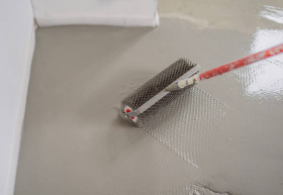
Application Techniques for Waterproof Exterior Paint
When it comes to applying waterproof exterior paint, several techniques can ensure optimal protection and aesthetics for your home. The three primary methods include brushing, rolling, and spraying, each possessing distinct advantages depending on the surface and desired finish.
Brushing is a traditional method that allows for precise control, making it ideal for intricate surfaces and smaller areas. To begin, select high-quality brushes specifically designed for exterior paints, which can handle thicker paint formulations like mithila home paints. Ensure the surface is clean and dry before application. Dip the brush in the paint, allowing excess to drip off, and apply in long, even strokes, working in sections to avoid overlaps. Smartly maintaining a wet edge will assist in achieving a seamless finish.
Rolling is preferred for larger, flat surfaces as it offers increased speed and efficiency. Use a roller cover compatible with exterior materials, ideally with a ¾-inch nap for rough surfaces. Start by pouring the paint into a tray and evenly loading the roller. Apply the paint by rolling it onto the surface in a “W” pattern to cover evenly, then fill in any bare spots. This method enhances durability while distributing waterproof paint uniformly, which is crucial for long-lasting results.
Spraying is another effective technique, particularly suited for extensive areas or when a smooth finish is desired. Using an airless spray gun can provide an even coat of mithila home paints. However, it requires careful handling and safety measures, such as wearing masks and goggles to protect against overspray and fumes. Ensure the area is well-ventilated and that surfaces not being painted are adequately covered to avoid unintentional splatters.
Regardless of the method chosen, environmental considerations are essential. Minimize paint waste and securely dispose of any leftover materials according to local regulations. Always check the weather conditions before beginning your project, as applying waterproof paint should ideally occur during dry and mild temperatures. This practice not only promotes a successful application but also contributes to a sustainable painting process.

Common Mistakes to Avoid When Using Waterproof Paint
Applying waterproof exterior paint is a task that, when done correctly, can vastly improve the durability and aesthetic appeal of your home. However, there are several common mistakes that homeowners often make, which can lead to subpar results. One significant pitfall is inadequate surface preparation. Before applying any type of mithila home paints, it is crucial to clean, sand, and prime the surface properly. Failing to do so can result in poor adhesion and an uneven finish, which ultimately compromises the weather-resistant properties of the paint.
Another error frequently encountered is applying paint during unfavorable weather conditions. It is vital to ensure that the temperature is optimal and that there is no rain forecasted in the days following application. High humidity or extreme temperatures can affect drying times and the overall adhesion of waterproof paint, diminishing its performance. Homeowners should always check the weather and follow the manufacturer’s recommendations regarding the appropriate temperature and humidity levels for application.
In addition to surface preparation and weather considerations, using the wrong tools can also adversely affect the final outcome. It is essential to choose brushes, rollers, or sprayers that are suitable for the specific type of waterproof paint being used. Incorrect tools can lead to an uneven application, resulting in missed spots or a rough texture. Moreover, neglecting to follow manufacturer instructions is a common oversight that can lead to complications. Each waterproof paint product has specific guidelines regarding application thickness, drying times, and necessary primer use that must be adhered to for optimal results.
By being aware of these frequent mistakes and taking the necessary precautions, homeowners can ensure a successful application of mithila home paints, thereby maximizing both protection and aesthetics for their exterior surfaces.
Maintenance Tips for Your Waterproof Exterior Paint
To ensure the longevity and effectiveness of your waterproof exterior paint, regular maintenance is essential. One of the first steps in this maintenance routine is to conduct periodic inspections of the painted surfaces. Check for any signs of peeling, cracking, or discoloration. These indicators might suggest that the waterproof barrier is weakening and needs attention. It is advisable to perform these inspections at least twice a year, ideally during the spring and fall when weather conditions are stable.
When it comes to cleaning your mithila home paints, gentle methods should be employed to avoid damaging the finish. A mixture of mild soap and water can be effective in removing dirt and grime. Use a soft cloth or sponge to wipe down the surfaces, as abrasive materials may scratch the paint. For stubborn stains, a solution of vinegar and water may be used, but it is vital to test this on a small, inconspicuous area first to ensure compatibility with the paint.
Addressing wear-and-tear promptly can prevent more significant issues down the line. If you notice areas where the paint has begun to peel away or where moisture has started to penetrate, it’s critical to act quickly. Sand down the affected areas, clean them thoroughly, and apply a fresh coat of waterproof paint to restore protection. Keep an eye on high traffic areas or places that are prone to harsh weather conditions, as these spots may require more frequent touch-ups.
Finally, knowing when to repaint is crucial for maintaining the aesthetics and performance of your exterior paint. Signs that it might be time for a fresh coat include fading, chalking, or an apparent lack of gloss. Depending on your climate and the quality of the initial application, repainting every five to seven years is generally a good practice to ensure your mithila home paints continue to offer effective waterproof protection.
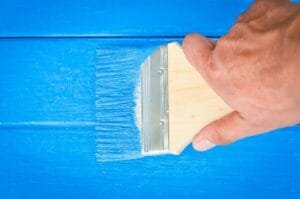
Cost Considerations: Budgeting for Waterproof Exterior Paint
When planning for a painting project, particularly with waterproof exterior paint, a thorough understanding of the associated costs is crucial. Homeowners should consider several factors that influence the overall expense. One of the primary determinants is the quality of the paint itself; premium brands, like Mithila home paints, tend to offer enhanced durability and a better finish, but at a higher price point. Investing in high-quality paint often results in long-term savings, as it minimizes the need for frequent repaints.
The surface area that requires painting directly affects the total cost as well. Homeowners should calculate the total square footage of the exterior surfaces to be painted. A larger area naturally requires more paint and potentially more labor if hiring professionals. For accurate budgeting, most paint retailers provide coverage estimates indicating how much paint is needed based on the size of the surface area. Additionally, certain materials, such as wood or stucco, may require specific preparations or primers, which could further drive up costs.
Another important aspect to consider is whether to hire professionals or undertake a DIY project. Engaging a skilled contractor may add to upfront costs; however, it ensures efficiency and expertise, which can be beneficial when using specialized products like waterproof exterior paints. On the other hand, a DIY approach can lead to significant savings, albeit with a steeper learning curve and potential challenges in application quality.
Overall, it is essential for homeowners to create a detailed budget that encompasses the cost of materials, surface preparation, labor (if applicable), and any additional tools or equipment required for the job. By carefully considering these components, individuals can effectively manage their spending while achieving an aesthetically pleasing and protective exterior finish.
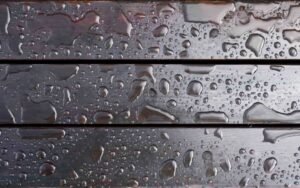
Conclusion: The Importance of Choosing Waterproof Exterior Paint
Choosing the right exterior paint is crucial for maintaining the integrity and aesthetics of your home. Waterproof exterior paints, such as mithila home paints, offer the dual benefits of protection against moisture and enhancing the visual appeal of your property. These specialized paints are designed to create a barrier that prevents water infiltration, which can cause significant damage over time, including mold growth, wood rot, and faded colors.
Throughout this guide, we have discussed the myriad advantages of selecting waterproof paint for your home. The application of such paints provides longevity, reducing the frequency of repainting and maintenance. By opting for trusted brands like mithila home paints, homeowners are investing not only in a product but also in the preservation of their property. These paints come in a variety of finishes and colors, allowing for individualized aesthetics while ensuring that the protective qualities remain intact.
Additionally, the features of waterproof exterior paints include UV resistance and durability against adverse weather conditions, making them suitable for various climates. Protecting your home’s exterior from rain, sun, snow, and wind through the use of superior-quality paints can significantly enhance its market value. It is vital to consider the specific requirements of your home’s location when selecting an exterior paint, as different environments may necessitate different protective qualities.
In conclusion, the investment in waterproof exterior paint is an essential step for every homeowner aiming to maintain not just the beauty of their house but also its structural integrity. By prioritizing informed decisions on products such as mithila home paints, you can ensure that your home remains appealing and resilient against the elements for many years to come.

